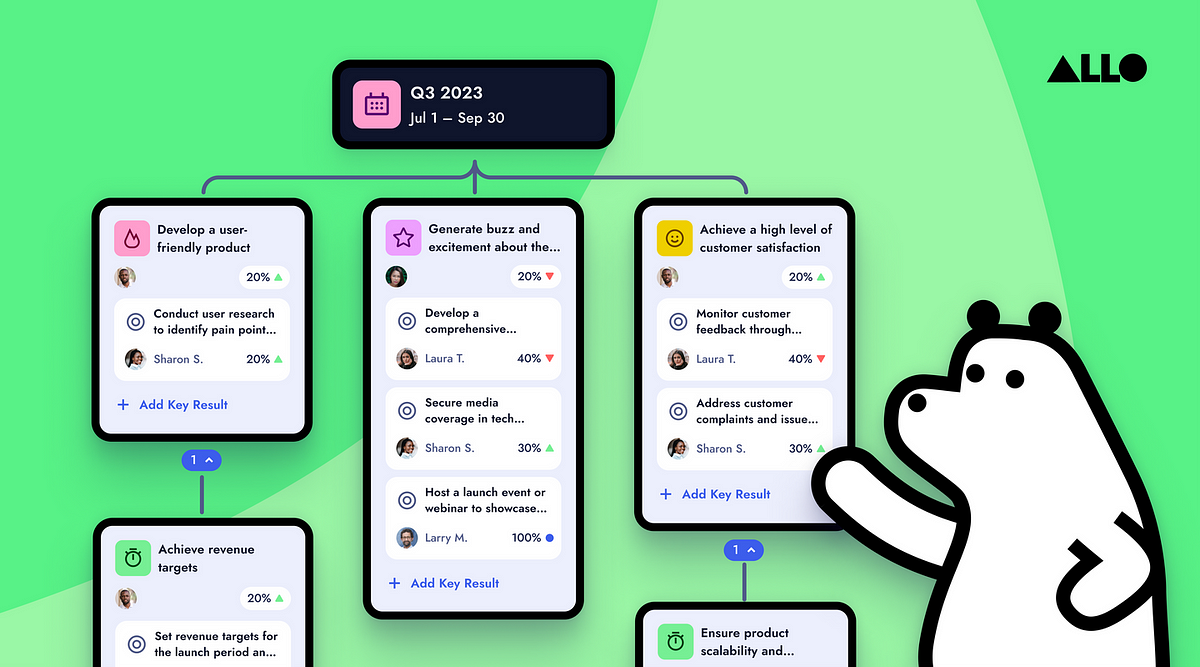Simplicity as an OKR Superpower - Conquering the Curse of Complexity (Part 4 of 4)

In previous articles, we explored the lack of visualization, engagement, and connection pitfalls. Now let's tackle another common struggle - complexity that hinders usability.
The Labyrinth of Complex OKRs
Even with proper visualization, engagement, and connection, OKRs can still fail to gain traction. The culprit? Complexity that makes the framework confusing and cumbersome to work with.
When objectives become a maze of jargon and intricate requirements, engagement suffers. Teams get lost, struggling to navigate bloated OKR structures. Initiatives stall as usability challenges overwhelm the focus on goals.
This complexity confounds the tracking superpower. Rather than transparent progress visibility, teams get blocked by fragmented systems. Clarity and alignment deteriorates.
Causes of Complicated OKRs
Multiple factors can create complicated OKR frameworks that hinder usability:
- Wordy, buzzword-filled objectives that lack clarity and concrete meaning. Ambiguity leads to misalignment.
- Key results focused on complex lagging indicators versus simple lead measures. Complicated metrics are hard to move and track.
- Deep multi-level hierarchies with too many layers of goals. Hard to navigate and cascade properly.
- Mismatched cadences for different goal layers causes update misalignment.
- Loosely defined labels like "themes" and "milestones" adds ambiguity.
- Disjointed tracking through fragmented spreadsheets and tools. No central progress visibility.
- Manual reporting causes delays and inaccuracy. Progress data becomes stale.
- Lack of documentation around OKR processes and best practices. Causes confusion.
- Insufficient training on writing clear OKRs, tracking, navigating systems. Hinders proficiency.
- Overcustomization and configuration vs standardized structures. Increases complexity.
The key is to eliminate unnecessary complexity that doesn't contribute clear value. Simplify objectives, streamline hierarchies, integrate tracking, and supply ongoing training. This conquers complexity and boosts usability.
Conquering Complexity

To overcome OKR complexity, focus on simplification, clarity, and support:
- Write clear, concise objectives and key results in plain language. Avoid ambiguous business jargon.
- Streamline hierarchies and structures to the essentials. Don't overcomplicate goal layers.
- centralize tracking into unified, visual systems. Fragmented spreadsheets and tools obscure visibility.
- Supply simple starter templates and examples for formulating new OKRs. Don't start from scratch.
- Create centralized libraries of documented OKR best practices and processes. Reduce confusion through guidelines.
- Conduct interactive onboarding workshops and demos. Hands-on learning builds proficiency.
- Offer continuous training on writing effective OKRs, navigating systems, tracking techniques. Build expertise across teams.
- Incorporate in-app guidance and cheat sheets. Embedded assistance aids adoption.
- Set up discussion forums for crowdsourcing answers to OKR questions. Facilitates troubleshooting and learning.
- Gather user feedback through surveys and interviews. Improve usability based on pain points.
- Provide ongoing expert support. Quickly resolve user difficulties blocking engagement.
With the right simplicity mindset and supportive resources, organizations can conquer complexity. Usability empowers teams to cut through convoluted frameworks and focus on meaningful objectives that drive results.

Related:



Learn more:







